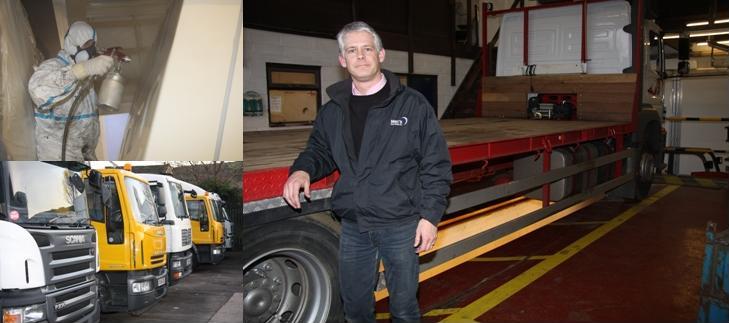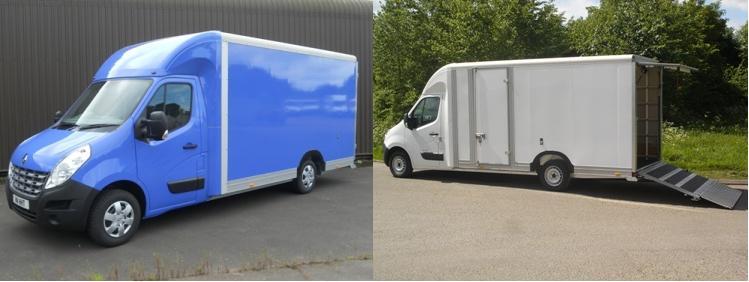The Mover asked some of the UK’s major players how they were faring and if any new trends had emerged as a result of Europe’s fragile economy.
Like most businesses during the last few years, companies building vans for the removals industry have had their fair share of challenges. Falling sales during the recession have forced body builders to look carefully at their businesses and how best to respond to changing market conditions.
Despite having been through a difficult trading period all the companies we spoke said that business was generally pretty good and although things hadn’t yet returned to pre-2008 levels, they were steadily improving.
Derek Avis from Norfolk-based body builder Vancraft said his company had been very badly hit at the beginning of the recession, resulting in several redundancies. “We had to reduce our staffing levels in line with the falling demand for our services, but since then business has improved every year.” However, now that orders were returning they were more efficient than ever and looking forward to a successful future. Derek has noted a growing trend towards larger vehicles, particularly ‘road trains’ mainly for European work. Body streamlining is also becoming popular as operators strive to save fuel.

Above left: Vancraft's factory floor; right: work progressing on a chassis
Terry Sinnott from Unique Van Bodies (UVB) echoed Vancraft’s comments about streamlining. “We were one of the first companies to build a boat-tail- style removals van and several of our customers have taken delivery recently,” said Terry. “The roof of the van is shaped like a banana and the rear 6-7 feet tapers inwards to reduce drag. Although there are no scientific figures to show how much fuel is saved it’s estimated to be around 10%. We’ll know more when our customers compare their fuel costs with previous years.” The most common chassis choices for UVB’s customers are DAF, Mercedes, and Scania although in recent years MAN vehicles have become more popular, probably due to their engine technology and keen pricing.
UVB is currently in the process of applying for Whole Vehicle Ty pe Approval (WVTA) although an official date for compulsory compliance has not yet been firmly set. However, some time in 2014 is the latest best guess in this long-running saga. Whenever it’s introduced, Terry is confident UVB will be ready and the company is working closely with the Vehicle Builders and Repairers Association (VBRA) to make sure its systems and vehicle specifications are ready for inspection by the Vehicle Certification Agency by spring next year.
pe Approval (WVTA) although an official date for compulsory compliance has not yet been firmly set. However, some time in 2014 is the latest best guess in this long-running saga. Whenever it’s introduced, Terry is confident UVB will be ready and the company is working closely with the Vehicle Builders and Repairers Association (VBRA) to make sure its systems and vehicle specifications are ready for inspection by the Vehicle Certification Agency by spring next year.
Mac’s Truck Sales Ltd reports an increasing demand for five-container vehicles with sleeping accommodation for 2-3 people. Martin McDade-Smith said: “People are deciding to upgrade their vehicles after quite a long period without change. Part of the reason is the changes in the emission regulations but also they’re looking to increase the capacity they can carry. In the removals business weight is seldom a problem, it’s space people need.” All Macs’ trucks are fitted with wind deflectors to reduce drag and the company is looking at introducing ‘tear-drop’ designs on some of its smaller vehicles where height restrictions are not a problem. Martin said that Macs’ hadn’t been too badly affected by the recession. “We build vans mainly for stock so customers can come and look them over before they buy. So long as they keep coming the body shop stays in business,” said Martin.

Top left: The paint shop in action at Macs Trucks; bottom left: a selection of stock vehicles; Right: Martin McDade-Smith
Fame Commercials Colchester Ltd specialises in the smaller 3.5 tonne van market and has seen a marked trend towards used vehicles. Gener al Manager Trevor Carroll said: “Not everyone has thirty or forty thousand pounds to spend on a new van and by building a new body onto a two or three year old chassis we can save them about £10,000. We only use low mileage vehicles – usually under 30,000 – so there is many years of useful life left in them. We build five-meter box bodies onto twin-axle chassis which are only about a foot off the ground and very easy to load.”
al Manager Trevor Carroll said: “Not everyone has thirty or forty thousand pounds to spend on a new van and by building a new body onto a two or three year old chassis we can save them about £10,000. We only use low mileage vehicles – usually under 30,000 – so there is many years of useful life left in them. We build five-meter box bodies onto twin-axle chassis which are only about a foot off the ground and very easy to load.”
For its new builds Fame uses Citroen, Fiat and Peugeot c hassis and is currently developing a single axel 4.6-meter, 25-cube van with sleeping accommodation for two people. The van is aimed at companies operating on longer routes, especially in Europe, and is expected to be available next year.
hassis and is currently developing a single axel 4.6-meter, 25-cube van with sleeping accommodation for two people. The van is aimed at companies operating on longer routes, especially in Europe, and is expected to be available next year.
Devon-based Trucksmith is a UK agent for Hino trucks and also a body building partner for Renault and Vauxhall vans. The company specialises in building vans in the 3.5 – 7.5-tonne range and has a reputation for exceptional payload. “With our 3.5 tonne vans we expect to get a payload of between 1.5 and 2 tonnes,” said Trucksmith’s Emma Trebble, “with a fuel consumption of around 30 mpg fully laden. Emma went on to explain that this type of vehicle is popular as they do not require a tachograph and driver’s hours are not restricted. Trucksmith’s larger Hino trucks are available in 7.5, 18 and 32 tonne options and again offer exceptional payload and fuel economy - an important factor with diesel prices at an all time high.

Above: Payload is the key factor for Devon-based Trucksmith